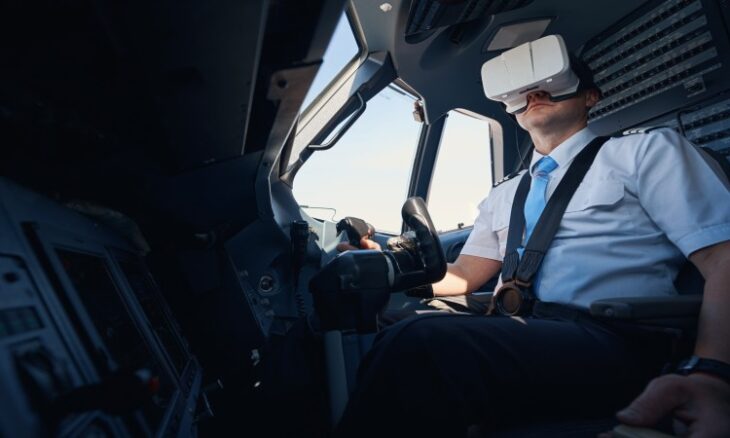CBP Introduces VR Flight Training for Federal Aviation Teams
Customs and Border Protection has begun a new phase of aviation training by adopting virtual reality simulators for its pilots. The move makes it the first U.S. federal law enforcement agency, and the first organisation within the Homeland Security Department, to use this technology for flight preparation. The decision marks a shift in how government aviation teams may approach training in the coming years.
A contract was recently awarded through Davenport Aviation for the supply of an Airbus H125 VR simulator, developed by Loft Dynamics in Switzerland. This device is the first of its type to gain approval from both American and European aviation regulators. It will be installed at the Air and Marine Operations training centre in Oklahoma City. Public spending records indicate the agency paid close to two million dollars for the system, while previous contracts with the same supplier have totalled nearly 230 million dollars for light helicopters used in border missions.
The Los Angeles Police Department was the earliest adopter of this technology in U.S. law enforcement, introducing the simulator to its pilot group earlier in the year. Its experience appears to have supported the idea that VR can provide a safer and more flexible way to prepare pilots for challenging situations, sparking interest at the federal level.
CBP currently operates more than 240 aircraft, including several fixed-wing models such as the Beechcraft King Air series, the Pilatus PC-12, and the General Atomics MQ-9 Predator B. It also relies on helicopters such as the UH-60 Black Hawk and the Airbus H125. The H125 is commonly deployed from off-airport locations to monitor metropolitan zones, reaching speeds of up to 135 knots and remaining airborne for around three hours. The helicopter is fitted with infrared sensors, electro-optical cameras, and night-vision compatibility.
Until now, CBP pilots have relied entirely on live helicopter flights for their required training. This approach often exposes them to unsuitable weather, limited instructor availability, and the inherent risk of practising emergency manoeuvres at altitude. Loft Dynamics argues that its VR-based flight devices offer a safer and more efficient alternative. These simulators allow pilots to recreate real-world events with no operational risk while reducing training costs and space requirements. The system occupies only about 20 square metres, making it far more compact than traditional simulators.
The technology includes a full-scale replica cockpit, complete with authentic components, functional controls, and detailed avionics. Two cockpit layouts are available: one with traditional instruments and another with a modern glass suite. Pilots using the system experience physical cues such as vibration, force feedback, and a full motion range. A VR headset immerses them in a 360-degree simulated environment, and the system even generates a digital version of the pilot to monitor movement. Instructors can record lessons through a virtual demonstration mode, offering clear opportunities for feedback and review.
Loft’s simulators attracted early interest from federal agencies. In 2023, the FAA evaluated the technology at its New Jersey research centre. The following year, it granted the company the first qualification for a VR-based flight training device in the United States. Airbus has since integrated the system into its own training operations in France, using it for type rating programmes after gaining regulatory approval.
The technology continues to expand into commercial aviation. Alaska Airlines has invested in Loft and is expected to become the first operator to use a fixed-wing version of the simulator. Both organisations are now working on a VR system for the Boeing 737, with regulatory submissions planned in the coming years. Development is also underway on an Airbus A320 variant.
These new fixed-wing simulators will require full qualification before airlines can adopt them widely. For now, the partners are exploring ways to use VR as an enhancement to existing FAA-approved training. As this work progresses, the aviation industry may see more organisations adopting VR-based devices to support pilot development and operational safety.










